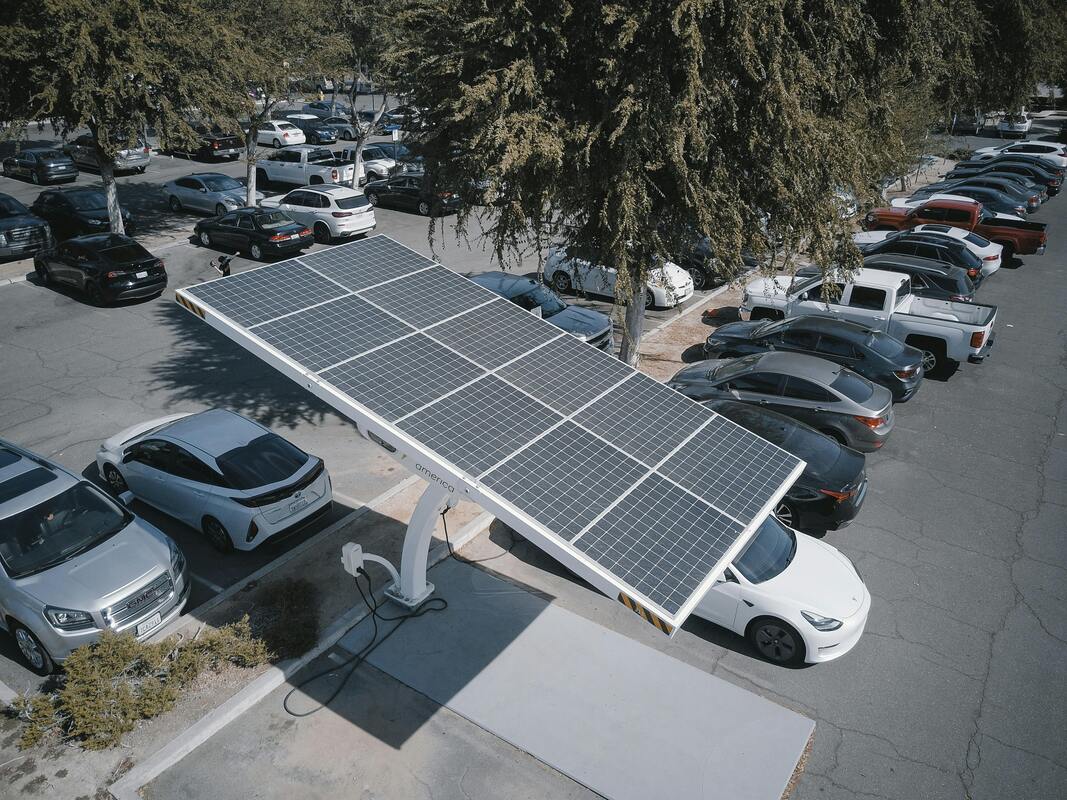|
By: B. Schwartzman Lucio You may have heard that our world is being consumed by climate change: temperatures are rising, glaciers are melting, and cities are drowning. And that’s not all – carbon emissions are polluting our air and dooming our respiratory systems. Luckily, simple solutions such as electric vehicles are being introduced as the solution to our environmental crisis. The idea sounds promising: countries such as Great Britain and Canada, who aim to have 100% of vehicles sales to be zero emission by 2035.
However, using electric vehicles to eliminate carbon emission is like placing a band-aid on a big open wound – and band-aids are no remedy. If anything, electric vehicles are the entry door to many other problems. Although electric vehicles are being introduced to reduce carbon emissions and their effects, there is not a significant reduction being observed, for three main reasons: the extraction of rare metals, longer carbon journeys involved in the production of these vehicles and the origin of electricity used to power these cars. Mining Rare metals such as lithium and cobalt are key components of batteries. According to MIT’s Climate Portal, every ton of extracted lithium is equivalent to 15 tons of CO2 emitted into the atmosphere. This is equivalent to the energy usage of two average American households – in a year! In addition, many ecosystems are lost in mining, only increasing carbon emissions. Not to mention that there are also many ethical problems involved in the mining of these finite resources. Around 60% of the world’s cobalt comes from the Democratic Republic of the Congo, where thousands of miners dig by hand – including children. Around 5 to 10 kilograms of cobalt are used in the typical electric car. And as lithium and cobalt are increasingly required not only for electric vehicle batteries, these will soon be depleted. Longer carbon journeys As components of electric vehicles are produced in different parts of the world, including rare metals which often come from Africa, these are shipped several times across the world throughout the manufacturing process. It is recognized that the production of electric vehicles can release up to 60% more carbon than of regular diesel or petrol cars. A study conducted at the University of Munich concluded that a Mercedes C220 diesel model creates less greenhouse gases than a Tesla Model 3. The Origin of Electricity We must consider that our electric vehicles are only as green as the power grid they draw from. Consider driving an electric vehicle in Norway, where 98% of electricity comes from renewable sources such as hydropower and wind power as opposed to driving an electric vehicle in China, where as much as 65% of electricity generated is drawn from sources such as coal and natural gas, as reported by the International Energy Agency. Experts such as Professor Michael Kelly from Cambridge University also argue that the need to charge electric vehicles could overload the power grid and lead to power cuts in Britain, which could be applicable to any other country. Finding the solution Currently, there are no plausible solutions that will eliminate carbon emissions worldwide. In terms of transportation, the same applies. Therefore, we must seek options that minimize carbon emissions effectively. One possible solution could be to implement greener public transportation, such as electric buses. Around 98% of the world’s electric buses are in China. With that, we can have more people sharing the same vehicles, thus polluting significantly less. Cliché but true: change starts with us. If we begin to consider, how can we contribute to lower carbon emissions, we will begin to experience change. Could you walk? Could you ride a bike? Could you share a ride? How can you help? Bibliography: https://climate.mit.edu/ask-mit/how-much-co2-emitted-manufacturing-batteries https://www.washingtonpost.com/graphics/business/batteries/congo-cobalt-mining-for-lithium-ion-battery/ https://www.statista.com/statistics/1025497/distribution-of-electricity-production-in-norway-by-source/ https://www.iea.org/countries/china https://www.nytimes.com/2022/10/19/business/electric-vehicles-carbon-footprint-batteries.html https://www.eea.europa.eu/en/topics/in-depth/transport-and-mobility?activeTab=fa515f0c-9ab0-493c-b4cd-58a32dfaae0a https://www.un.org/sites/un2.un.org/files/media_gstc/FACT_SHEET_Climate_Change.pdf https://www.gov.uk/government/news/pathway-for-zero-emission-vehicle-transition-by-2035-becomes-law https://www.cbc.ca/news/canada/electric-vehicles-your-questions-answered-1.7064944
0 Comments
Leave a Reply. |
Categories
All
Archives
April 2024
|

